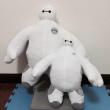
Lord of the Flies
正版二手 内页有写画 不缺页 实物拍摄
¥ 5 八品
仅1件
河南郑州
认证卖家担保交易快速发货售后保障
作者William Golding(威廉·戈尔丁) 著
出版社Penguin Books
出版时间2006-10
装帧平装
货号SC东9-C31X
上书时间2024-12-27
- 在售商品 暂无
- 平均发货时间 11小时
- 好评率 暂无
- 店主推荐
- 最新上架
商品详情
- 品相描述:八品
图书标准信息
- 作者 William Golding(威廉·戈尔丁) 著
- 出版社 Penguin Books
- 出版时间 2006-10
- ISBN 9780399533372
- 定价 74.60元
- 装帧 平装
- 开本 其他
- 纸张 胶版纸
- 页数 225页
- 正文语种 英语
- 【内容简介】
-
William Golding's compelling story about a group of very ordinary small boys marooned on a coral island has become a modern classic. At first it seems as though it is all going to be great fun; but the fun before long becomes furious and life on the island turns into a nightmare of panic and death. As ordinary standards of behaviour collapse, the whole world the boys know collapses with them—the world of cricket and homework and adventure stories—and another world is revealed beneath, primitive and terrible.
Lord of the Flies remains as provocative today as when it was first published in 1954, igniting passionate debate with its startling, brutal portrait of human nature. Though critically acclaimed, it was largely ignored upon its initial publication. Yet soon it became a cult favorite among both students and literary critics who compared it to J.D. Salinger's The Catcher in the Rye in its influence on modern thought and literature.
Labeled a parable, an allegory, a myth, a morality tale, a parody, a political treatise, even a vision of the apocalypse, Lord of the Flies has established itself as a true classic.
《蝇王》是英国作家、诺贝尔文学奖获得者威廉·戈尔丁的代表作,是一本重要的哲理小说,借小孩的天真来探讨人性的恶这一严肃主题。故事发生于想象中的第三次世界大战,一群六岁至十二岁的儿童在撤退途中因飞机失事被困在一座荒岛上,起先尚能和睦相处,后来由于恶的本性的膨胀起来,便互相残杀,发生悲剧性的结果。作者将抽象的哲理命题具体化,让读者通过阅读引人入胜的故事和激动人心的争斗场面来加以体悟,人物、场景、故事、意象等都深具象征意义。 - 【作者简介】
-
Born in Cornwall, England, in 1911 and educated at Oxford University, William Gerald Golding's first book, Poems, was published in 1935. Following a stint in the Royal Navy and other diversions during and after World War II, Golding wrote Lord of the Flies while teaching school. This was the first of several novels including Pincher Martin, Free Fall, and The Inheritors and a play, The Brass Butterfly, which led to his being awarded the Nobel Prize for Literature in 1983.
威廉·戈尔,小说家。1983年获诺贝尔文学奖金,代表作有《蝇王》、《继承人》、《塔尖》等。
点击展开
点击收起
— 没有更多了 —


















以下为对购买帮助不大的评价